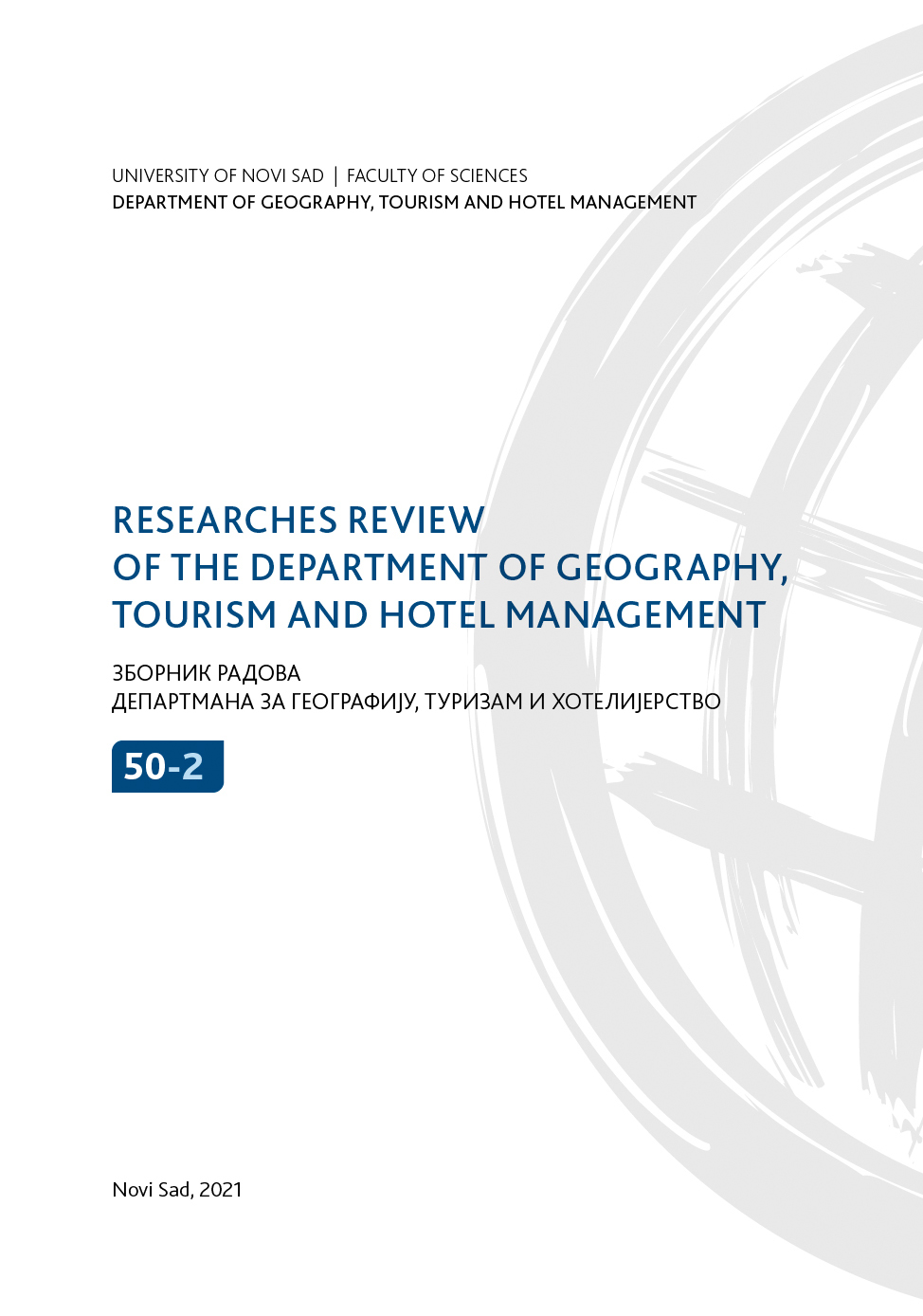Author(s): Boško Milovanović,Kaoru Takar,Milan Radovanović,Milovan Milivojević,Jasmina Jovanović / Language(s): English
Issue: 3/2023
This paper describes the frequency analysis of absolute maximum air temperatures, using annual maximum series (AMS) in the period 1961–2010 from 40 climatological stations in Serbia with maximum likelihood estimation of distribution parameters. For the goodness of fit testing of General Extreme Value (GEV), Normal, Log-Normal, Pearson 3 (three parameters), and Log-Pearson 3 distribution, three different tests were used (Kolmogorov-Smirnov, Anderson-Darling, chi-square). Based on the results of these tests (best average rank of certain distribution), the appropriate distribution is selected. GEV distribution proved to be the most appropriate one in most cases. The probability of exceedance of absolute maximum air temperatures on 1%, 0.5%, 0.2%, and 0.1% levels are calculated. A spatial analysis of the observed and modeled values of absolute maximum air temperatures in Serbia is given. The absolute maximum air temperature of 44.9 °C was recorded at Smederevska Palanka station, and the lowest value of maximum air temperature 35.8 °C was recorded at Zlatibor station, one of the stations with the highest altitude. The modeled absolute maximum air temperatures are the highest at Zaječar station with 44.5 °C, 45.6 °C, 47.0 °C, and 48.0 °C and the lowest values are calculated for Sjenica station with 35.5 °C, 35.8 °C, 36.1 °C, and 36.2 °C for the return periods of 100, 200, 500, and 1000 years, respectively. Our findings indicate the possible occurrence of much higher absolute maximum air temperatures in the future than the ones recorded on almost all of the analyzed stations.
More...











